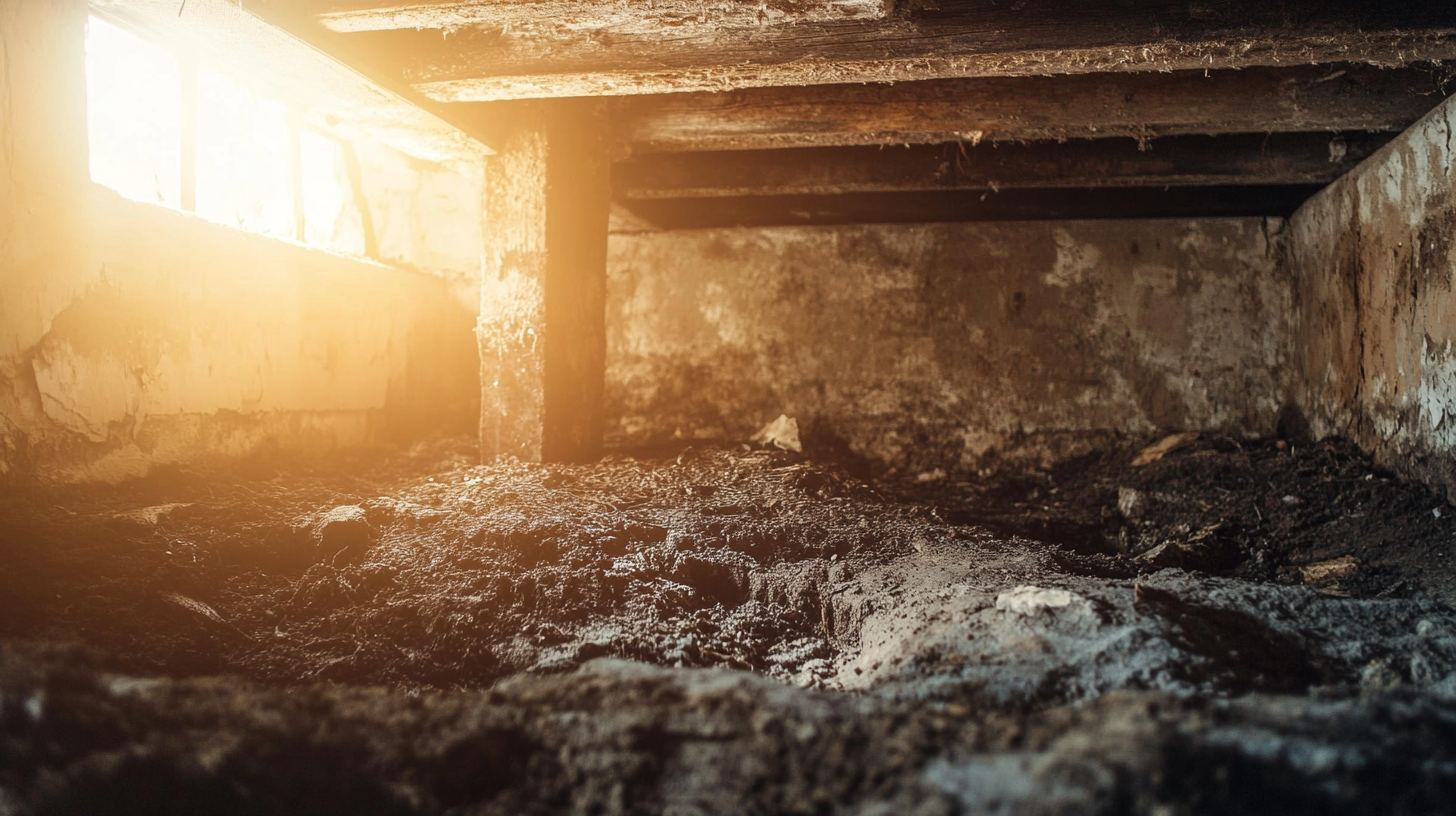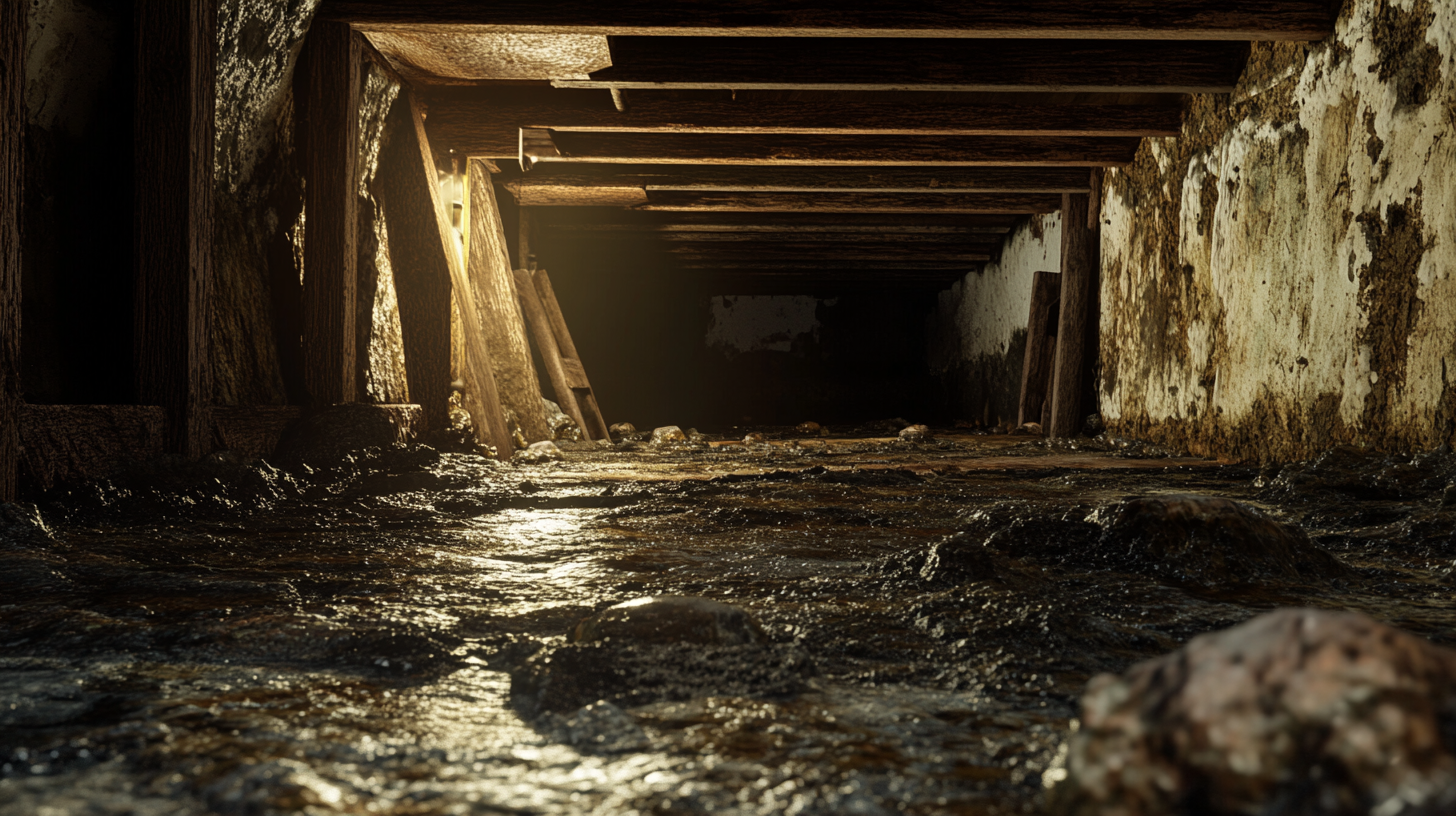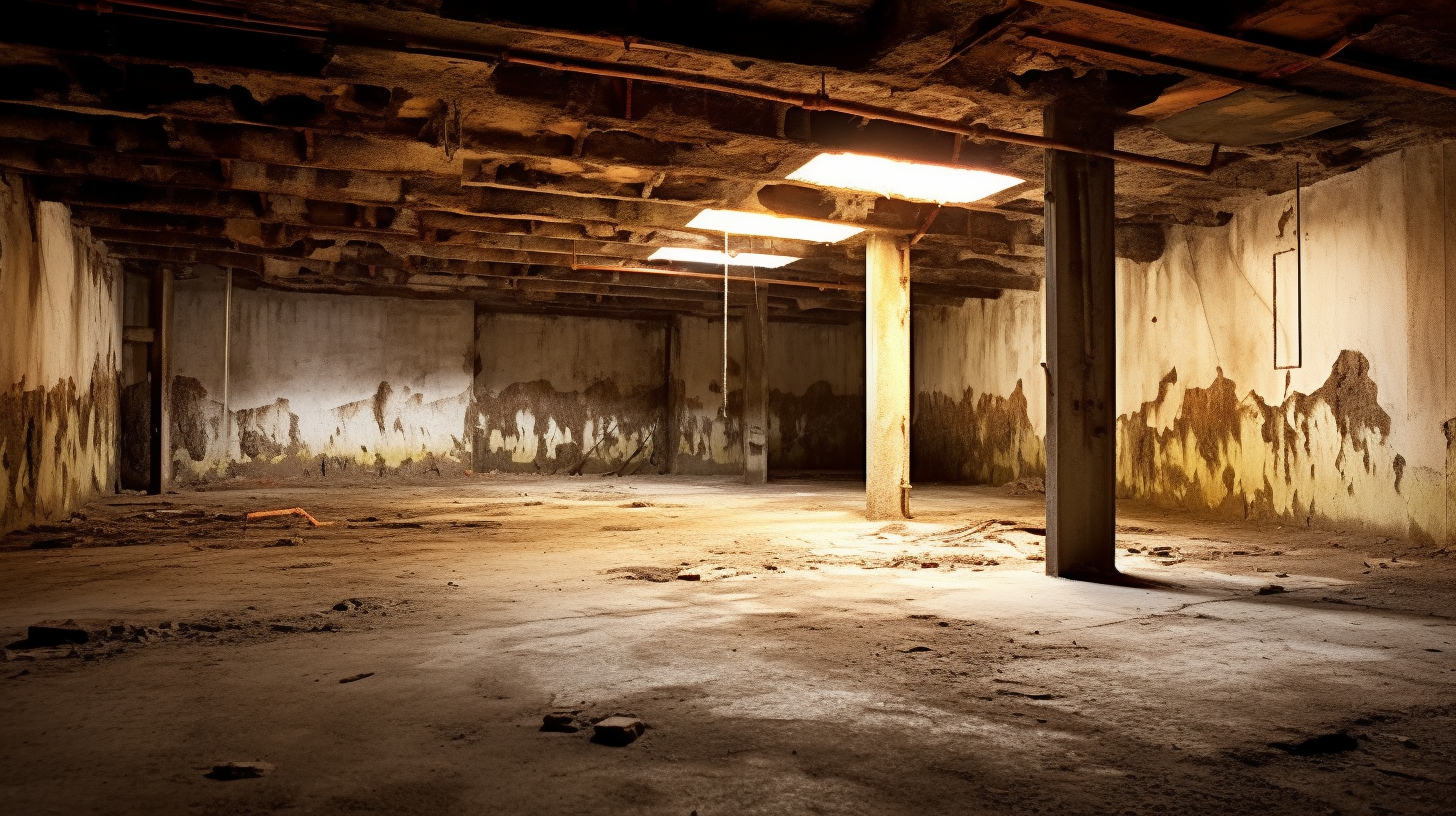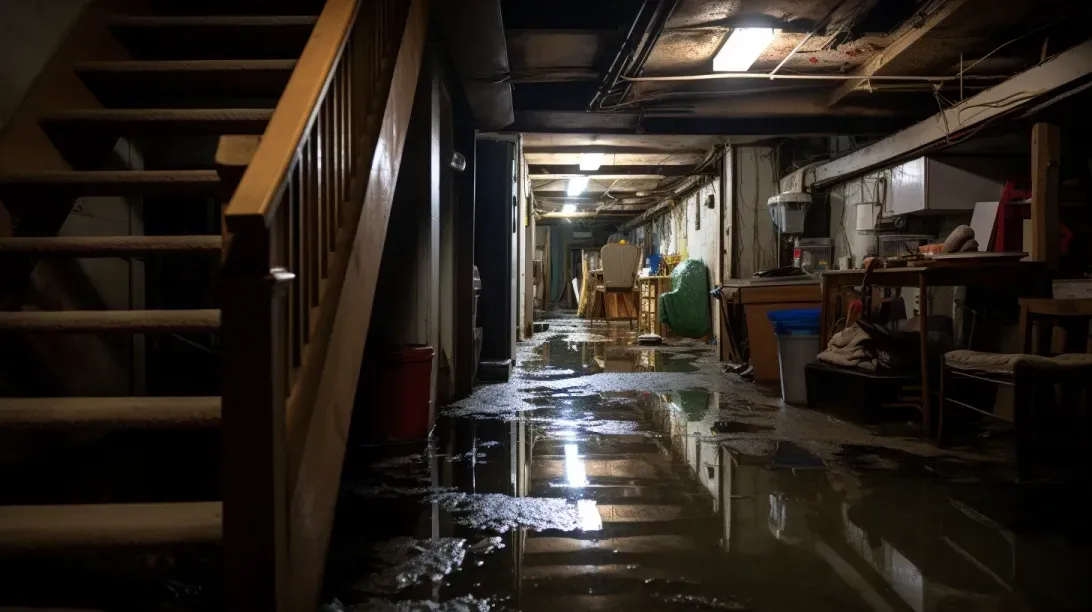Now IS THe Time To...

Crawl Space Services In Knoxville, TN
Stetson Howard: 865-432-6743
CRAWL SPACE ENCAPSULATION, REPAIR, WATERPROOFING & MOLD REMOVAL
No-Obligation, Free Inspections
No-Obligation Free Estimates
We Warranty All of Our Work
100% Satisfaction Guaranteed
Welcome to our comprehensive exploration of waterproofing paints, a crucial ally in protecting your structures from water damage. In this blog, we delve into the fascinating world of waterproofing solutions, focusing on the purpose, benefits, and limitations of waterproofing paints.
Understanding Waterproofing Paints
Waterproofing paints are more than just a layer of coating; they are a shield against moisture and water infiltration. These specialized paints are designed to create an impermeable barrier, safeguarding surfaces from the damaging effects of water and humidity. From concrete walls to wooden decks, waterproofing paints play a pivotal role in extending the life and maintaining the integrity of various structures.
The Purpose of Waterproofing Paints
The primary purpose of these paints is to prevent water penetration in residential, commercial, and industrial buildings. They are essential in areas prone to dampness, such as basements, bathrooms, and exteriors exposed to harsh weather conditions. By understanding their role, homeowners and builders can make informed decisions about protecting their properties.
Advantages: More Than Just Water Resistance
While the key benefit of waterproofing paints is their resistance to water, they offer more advantages. These include preventing mold and mildew growth, reducing maintenance costs, and enhancing the aesthetic appeal of structures. We will explore these benefits in detail, providing insights into how waterproofing paints contribute to the overall health and durability of buildings.
Limitations: A Balanced Perspective
No solution is without its limitations, and waterproofing paints are no exception. It's crucial to understand their boundaries and the scenarios where they may not be the ideal choice. This section will address common concerns and limitations, such as preparation requirements, environmental factors, and compatibility with different surfaces.
Join us as we navigate the intricacies of waterproofing paints, equipping you with the knowledge to make the best choices for your waterproofing needs. Whether you're a homeowner looking to protect your investment or a professional seeking reliable solutions, this blog will serve as your guide to understanding the full spectrum of waterproofing paints.
What are Waterproofing Paints?
Waterproofing paints are specialized coatings designed to protect various surfaces from water and moisture damage. These paints form an impermeable barrier, effectively preventing water infiltration and the associated problems it can cause, such as mold, mildew, and structural damage. Ideal for use in areas prone to dampness or direct water exposure, waterproofing paints are a key component in maintaining the integrity and longevity of buildings.
Composition and Types
Composition of Waterproofing Paints
Waterproofing paints are formulated with water-repellent materials that create a moisture-resistant layer upon application. Common ingredients include acrylic, epoxy, and elastomeric compounds, which contribute to the paint's flexibility, durability, and water-resistant properties. These components are carefully selected to ensure that the paint adheres well to surfaces and withstands environmental factors like UV rays and temperature changes.
Different Types and Their Specific Applications
There are several types of waterproofing paints, each suited to specific applications and surfaces:
- Acrylic Waterproofing Paint: Ideal for exterior walls, this type offers excellent weather resistance and durability.
- Epoxy-Based Waterproofing Paint: Commonly used in industrial settings, it's known for its strength and resistance to chemicals.
- Elastomeric Waterproofing Paint: This type is highly flexible, making it perfect for surfaces that experience movement or expansion.
- Cementitious Waterproofing Paint: Often used in basements and bathrooms, it provides robust protection in damp environments.
- Each type has unique properties that make it suitable for different scenarios, from residential to commercial and industrial applications.
How Waterproofing Paints Work
Mechanism Behind Waterproofing Paints
The effectiveness of waterproofing paints lies in their ability to form a dense, water-resistant film over the surface. When applied, the paint's water-repellent components coalesce, creating a seamless barrier that blocks moisture penetration. This barrier not only prevents water ingress but also allows the surface underneath to breathe, reducing the risk of trapped moisture and resultant damage.
Situations Where They Are Most Effective
Waterproofing paints are particularly effective in:
- Basements and Cellars: Areas below ground level where dampness is a common issue.
- Bathrooms and Kitchens: Spaces with high humidity and direct water exposure.
- Exterior Walls and Roofs: To protect against rain, snow, and other weather elements.
- Decks and Balconies: Outdoor areas that require protection from rain and moisture.
- Understanding where and how to use waterproofing paints is crucial for achieving optimal results and ensuring the longevity of the protective coating.
Cons of Waterproofing Paints
While waterproofing paints offer significant benefits in protecting structures from moisture, it's important to acknowledge their limitations and challenges. Understanding these drawbacks is crucial for making informed decisions and ensuring the longevity and effectiveness of waterproofing efforts. This section explores the potential downsides of using waterproofing paints, including their limitations in severe conditions, durability concerns, risks of trapped moisture, and application challenges.
Limitations in Severe Conditions
Scenarios Where Waterproofing Paint May Not Be Sufficient
Waterproofing paints are effective in many scenarios but may fall short in extreme conditions. In areas with persistent or heavy water exposure, such as flood zones or regions with high groundwater levels, waterproofing paints alone might not provide adequate protection. Similarly, in climates with severe temperature fluctuations, the paint may degrade more rapidly.
Importance of Understanding Its Limitations
Recognizing the limitations of waterproofing paints is essential for proper planning. In severe conditions, it may be necessary to combine paints with other waterproofing methods, such as membranes or drainage systems, to ensure comprehensive protection.
Durability Concerns
Lifespan of Waterproofing Paint Under Various Conditions
The durability of waterproofing paint can vary significantly based on environmental factors and the quality of the paint. Typically, these paints last several years, but exposure to harsh weather, UV radiation, and physical wear can reduce their lifespan.
Maintenance and Reapplication Requirements
Regular maintenance is crucial to sustain the effectiveness of waterproofing paints. This includes periodic inspections and touch-ups. Eventually, reapplication will be necessary, and understanding this ongoing requirement is important for long-term waterproofing strategies.
Potential for Trapped Moisture
How Improper Application Can Lead to Trapped Moisture
If waterproofing paint is applied incorrectly, it can trap moisture beneath the surface. This is particularly problematic when the paint is applied to damp surfaces or in layers that are too thick, preventing proper drying and sealing.
Risks Associated with Moisture Entrapment
Trapped moisture can lead to various issues, including mold growth, structural damage, and paint failure. It's crucial to ensure proper application and surface conditions to avoid these risks.
Preparation and Application Challenges
Necessary Surface Preparation for Effective Application
For waterproofing paint to adhere properly and function effectively, thorough surface preparation is essential. This includes cleaning, repairing cracks, and ensuring the surface is dry. Neglecting these steps can compromise the paint's performance.
Potential Challenges and How to Overcome Them
Application challenges can include uneven coverage, difficulty in reaching all areas, and ensuring a consistent thickness. Overcoming these challenges requires careful planning, appropriate tools, and adherence to manufacturer instructions. In some cases, professional assistance may be beneficial to ensure optimal application.
Comparing Waterproofing Paints to Other Methods
In the realm of waterproofing, various methods are available, each with its unique properties and applications. Understanding the differences between these methods, particularly waterproofing paints and sealants, is crucial for choosing the right solution for specific needs. This section compares waterproofing paints to other common methods, highlighting their effectiveness, use cases, and how they fit into a comprehensive waterproofing strategy.
Waterproofing Paints vs. Sealants
Differences in Effectiveness and Use Cases
Waterproofing paints and sealants serve similar purposes but differ in application and effectiveness. Waterproofing paints are typically used to cover larger surface areas and form a breathable, water-resistant layer. They are ideal for preventing water penetration on walls, roofs, and floors. Sealants, on the other hand, are more targeted solutions used to seal joints, gaps, and cracks. They provide a flexible, watertight barrier that is essential for areas prone to expansion and contraction.
Situations Where One May Be Preferred Over the Other
Choosing between waterproofing paint and sealants depends on the specific requirements of the project:
- Waterproofing Paints: Best for large surface areas where a uniform, protective coating is needed, such as exterior walls or basements.
- Sealants: Ideal for sealing joints, windows, doors, and other areas where flexibility and precision are required.
Comprehensive Waterproofing Solutions
Role of Waterproofing Paint in a Broader Strategy
Waterproofing paint plays a vital role in a comprehensive waterproofing strategy but is often most effective when used in conjunction with other methods. For instance, while waterproofing paint can protect surfaces from moisture, combining it with sealants for joints and cracks ensures complete protection.
Importance of Considering Multiple Methods for Optimal Protection
For optimal protection against water damage, it's important to consider a multi-faceted approach:
- Assessment of Needs: Evaluate the specific waterproofing needs of the structure, considering factors like climate, building materials, and exposure to elements.
- Combining Methods: Use a combination of waterproofing paints, sealants, membranes, and other methods to address different aspects of waterproofing.
- Professional Consultation: Consulting with waterproofing experts can provide insights into the most effective strategies for a particular building or project.
In conclusion, while waterproofing paints are a key element in protecting structures from water damage, they are most effective when part of a broader, well-planned waterproofing strategy. Understanding the strengths and limitations of each method, including paints and sealants, allows for the development of a comprehensive approach that ensures long-term protection and durability.
Best Practices for Using Waterproofing Paints
To maximize the effectiveness of waterproofing paints, it's crucial to follow best practices in both preparation and application. Proper techniques ensure not only immediate water resistance but also long-term durability and protection. This section provides detailed guidance on preparing surfaces for waterproofing paint and the best techniques for application.
Surface Preparation Tips
Detailed Guide on Preparing Surfaces for Waterproofing Paint
Preparing the surface is a critical step in the waterproofing process. Here's a guide to ensure your surface is ready:
- Clean the Surface: Remove dirt, grime, and debris. For outdoor surfaces, pressure washing can be effective.
- Repair Damages: Fill any cracks or holes with an appropriate filler. Ensure the filler is compatible with the waterproofing paint.
- Remove Existing Paint or Sealant: If the surface has old paint or sealant, strip it to ensure the new waterproofing paint adheres properly.
- Dry the Surface: Ensure the surface is completely dry. Moisture trapped under the paint can lead to peeling and reduced effectiveness.
- Apply a Primer if Necessary: Some surfaces may require a primer for better adhesion. Follow the manufacturer's recommendations.
Importance of Proper Preparation for Long-Term Effectiveness
Proper preparation is key to the long-term success of waterproofing efforts. A well-prepared surface ensures better adhesion, more uniform coverage, and ultimately, more effective waterproofing.
Application Techniques
Step-by-Step Guide to Applying Waterproofing Paint
Applying waterproofing paint correctly is essential for achieving optimal protection. Follow these steps:
- Choose the Right Tools: Use brushes, rollers, or sprayers suitable for the type of waterproofing paint and surface.
- Mix the Paint Thoroughly: Ensure the paint is well-mixed to achieve consistent color and texture.
- Apply the First Coat: Start from the top and work your way down. Use even strokes and ensure complete coverage.
- Let it Dry: Allow the first coat to dry completely. The drying time will depend on the paint type and environmental conditions.
- Apply Subsequent Coats: If recommended, apply additional coats for better thickness and protection. Each coat should be allowed to dry thoroughly.
Tips for Achieving the Best Results
- Maintain Consistent Thickness: Avoid applying the paint too thinly or thickly. Follow the manufacturer's guidelines for the best results.
- Work in Suitable Conditions: Avoid painting in extreme temperatures or when rain is expected.
- Inspect as You Go: Regularly check for missed spots or drips and address them promptly.
Pros of Waterproofing Paints
Waterproofing paints offer a range of benefits that make them a popular choice for both professional and DIY projects. From ease of application to cost-effectiveness, aesthetic appeal, and versatility, these paints provide a practical and efficient solution for protecting various surfaces from water damage.
Ease of Application
Simplicity of Applying Waterproofing Paint
One of the key advantages of waterproofing paints is their ease of application. Most waterproofing paints can be applied using standard painting tools like brushes, rollers, or sprayers. This simplicity allows for quick and hassle-free application, making it an accessible option for people of varying skill levels.
Suitability for DIY Projects
Due to their user-friendly nature, waterproofing paints are ideal for DIY projects. Homeowners can easily apply these paints themselves, saving on labor costs and enjoying the satisfaction of personally enhancing their home's protection and appearance.
Cost-Effectiveness
Comparing Costs with Other Waterproofing Methods
When compared to other waterproofing methods, such as membrane or sheet-based waterproofing, paints often emerge as a more cost-effective solution. They require less labor and fewer materials, making them a budget-friendly option for many.
Analyzing Long-Term Financial Benefits
The long-term financial benefits of waterproofing paints are significant. By providing a durable barrier against moisture, they help prevent costly damage and repairs. This protective quality can extend the life of structures, reducing the need for frequent maintenance and saving money over time.
Aesthetic Appeal
Variety of Finishes and Colors Available
Waterproofing paints are available in a wide range of finishes and colors, offering aesthetic flexibility to match any design preference. This variety allows property owners to not only protect their structures but also enhance their appearance according to their taste.
Enhancing Appearance While Providing Protection
The dual function of waterproofing paints – enhancing appearance while providing robust protection – is a major advantage. They can improve the curb appeal of a property while simultaneously safeguarding it against water-related issues.
Versatility
Range of Surfaces Where Waterproofing Paint Can Be Applied
Waterproofing paints are incredibly versatile and can be applied to a variety of surfaces, including concrete, wood, metal, and plaster. This adaptability makes them suitable for a wide range of applications.
Examples of Indoor and Outdoor Applications
These paints are effective in both indoor and outdoor settings. Indoors, they are ideal for basements, bathrooms, and kitchens, while outdoors, they can be used on roofs, walls, decks, and balconies. This versatility ensures that waterproofing paints can meet diverse waterproofing needs.
FAQs
Recent Blog Posts
Crawl Space News







